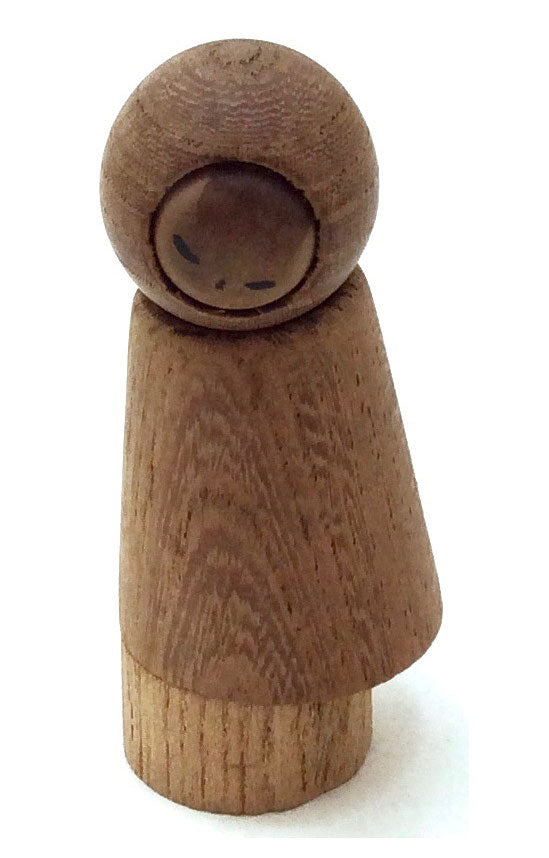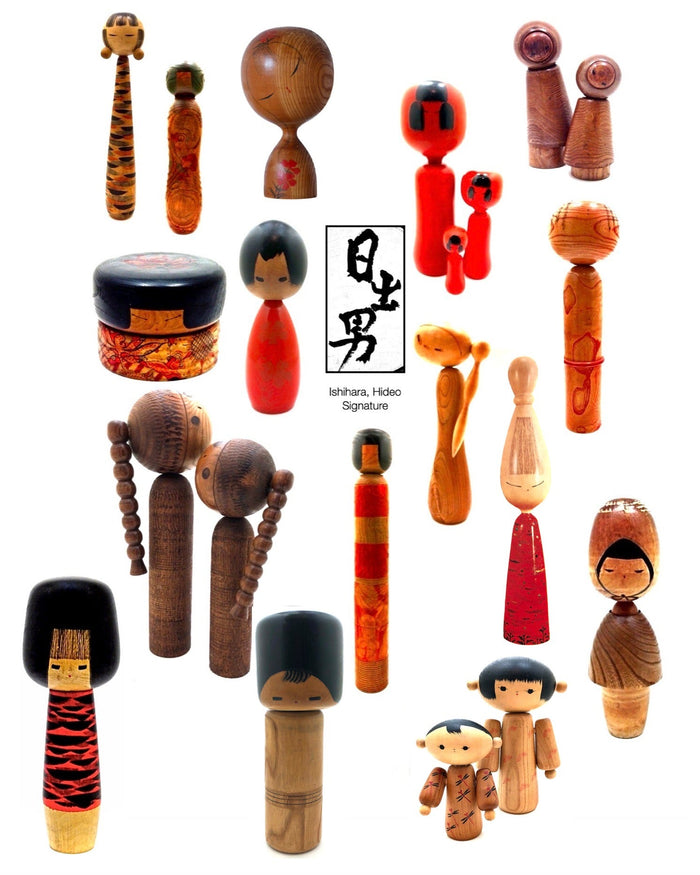
"Yukiguni | Snow Country"
Dimensions: 3-1/4" h
Buddhists in the North of Japan believe that Winter snow is a channel of energy, and is thought to be a ‘Divine Voice’ speaking to us through visual imagery. The Japanese people feel that they can truly experience the essence of snow with the “five” senses. This small figure is simple in character wearing a ‘Mino”, (snow coat), while the natural qualities of the wood adds pattern, depth and richness to the unornamented body.
Vintage Condition: “As is” with some scattered light wear or stain that does not affect the design, and retains the original craft/workmanship. Any discoloration, chipping/cracking, surface wear or structural damage are noted.

Artisan
Woodworker: Ishihara, Hideo
1925 - 1999
Biographical History:
Hideo graduated from Tohoku University with a degree in science. His grandfather was Iwataro Onuma, the Kokeshi artist credited with originating Naruto Kokeshi, perhaps the most famous style or strain of traditional Kokeshi types. Upon recovering from his illness, he moved to Sendai and began making Sosaku Kokeshi, and in ten years (1959-1969). During his medical treatment, he studied painting under Genichiro Inokuma. He lost interest in the traditional Kokeshi forms for he felt they were stagnating by family standards, and became an avid proponent of Sosaku Kokeshi allowing him the artistic freedom to experiment with various designs and forms. In 1964, he organized the Poetic Craft Exhibition and received more than sixty awards, including the highest honor, the Prime Minister’s Award. He was introduced to the twenty-three countries in Europe and America by NHK. He has sponsored 30 exhibitions in Japan including those at Matsuzakaya Nagoya and Ginza, and four exhibitions in overseas countries. He was one of the founders of the NKAHA, (Nippon Kokeshi Artistic Handicraft Association).
Collector's note – descriptive qualities, standard characteristics & ornamentation styles:
Ishihara-san’s dolls are based on many motifs found in nature and textile design. He loves portraying both young and old characters with differing hairstyles, (traditional and 1950s era). He illustrates numerous kimono styles in both painted form and carving and utilizes simple graphic treatment to emphasize the strong character of his dolls, which bring out the true nature of the wood materials through manipulation of the turned and carved wood. His dolls are always finished in a simple wax coating. It is also not unusual to see Hideo utilize sumi-e’ drawing of faces that have both the ‘one-stroke eye treatments, (Hitofude-me), as well as a variation of expressive renditions.
Explore & Learn More about Woodworker: Ishihara, Hideo